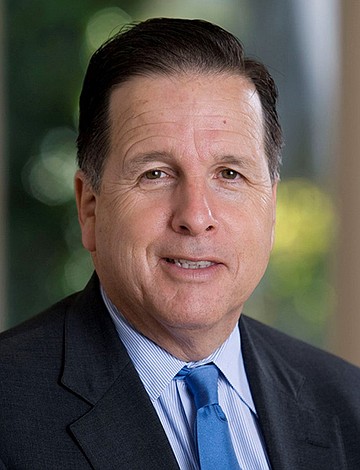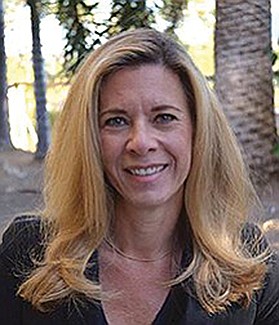 Facebook
Facebook
 X
X
 Instagram
Instagram
 TikTok
TikTok
 Youtube
Youtube

California residential electricity rates are the highest in the nation — by far. A major reason is that the California Public Utilities Commission, the so-called regulator, schmoozes Wall Street, promising to keep the profits of the state’s publicly held utilities — Sempra Energy, Pacific Gas & Electric, and Southern California Edison — higher than utility profits elsewhere. Those profits come out of ratepayers’ pockets.


Jacksonville Electric Authority tracks electricity rates around the nation, based on monthly 1000 kilowatt hours usage. In July of this year, the most expensive utility was Southern California Edison at $260.50 for 1000 kilowatt hours. Edison has shot to first place in recent surveys, greatly because San Diego Gas & Electric (part of San Diego–based Sempra) stopped providing data to Jacksonville recently after it got too much bad publicity for consistently being the most expensive, or among the most expensive, of the utilities. But Richard Rider, chairman of San Diego Tax Fighters, asked San Diego Gas & Electric to reveal its rates for certain inland customers, representing the bulk of the City of San Diego. The local utility charges a whopping $336 per 1000 kilowatt hours. “That’s 29 percent higher than the highest utility on the [Jacksonville] list — [Southern California Edison],” says Rider. I asked San Diego Gas if it wanted to dispute Rider’s number and never heard back.
The costs at Pacific Gas & Electric are difficult to calculate because it charges different rates to different communities. Like San Diego Gas & Electric, it doesn’t submit its rates to Jacksonville. Four years ago, its rate was $241.93 in Fresno. That rate no doubt has gone up considerably since then, says Rider, putting Pacific Gas among the most expensive.
Get this: in the July 2014 Jacksonville survey, the median for United States electric utilities was $123.91. Rates at San Diego Gas & Electric, Pacific Gas & Electric, and Southern California Edison are more than twice the national median. “What is little known by California residents is how astonishingly high California electricity rates are compared to just about any place,” says Rider.


Why? The California Public Utilities Commission boasts to Wall Street that it will keep the state utilities’ profits high. San Diego attorneys Mike Aguirre and Mia Severson were able to get commission documents showing its friendliness with securities analysts. For example, in 2011, analysts from Bank of America Merrill Lynch, RBC [Royal Bank of Canada] Capital Markets, and other investment firms were busy lining up interviews with commissioners, particularly the CPUC president, Michael Peevey.
“The commission continues to support strong rate base growth at the utilities,” exulted a Bank of America Merrill Lynch analyst in 2011. (The rate base is the value of a utility’s assets.) “The commissioners generally noted that California ROEs are on the higher end and will likely trend down, but not likely to industry averages.” (ROE is return on equity, or the rate of return on money invested by stockholders. The commission is assuring analysts that California utilities’ profits will continue to top profits of other states’ utilities.)
“A premature departure of President Peevey from the CPUC could further spook the [stock] market” because he has been so indulgent providing for utilities’ earnings, said an analyst for RBC Capital Markets.
Peevey learned of analysts’ reports, as well as Pacific Gas & Electric internal reports, because Brian Cherry, an executive of the company, emailed them to him. Cherry was later fired after emails he exchanged with commission officials clearly showed that those officials were trying to make sure the company’s financial penalty for its role in the 2010 San Bruno pipeline explosion would be sharply lowered. After the emails were published, Peevey recused himself from the vote on the punishment.
Why does Peevey put utilities’ profits first? For one thing, he is a former president of Southern California Edison. Wall Street analysts (wink, wink) say he wants the companies’ profits robust enough to finance greenhouse gas initiatives. If you believe that, you deserve to pay sky-high bills each month.
Basically, the commission pleases Wall Street by issuing inscrutable documents in language that financial analysts, but not consumers, can understand. Commissioners and administrative law judges make bizarre, disingenuous statements that almost invariably boost utilities’ profits and ratepayers’ bills.
A classic case is the commission’s maneuvering to make ratepayers cough up $3.3 billion over the shuttering of the San Onofre nuclear plant. Steam generators built to last 40 years failed after 2 years. The commission hired an expert, Dr. Robert Budnitz, to look into the failure. In an early report, he wrote just what the commission didn’t want to read — that his study would address critical questions: “What error(s) led to the tube failure(s)? Who made those errors?” The commission, which didn’t want to think about errors, tucked his initial study away and refused to provide it to the press until pressured to do so.
Said Aguirre and Severson in a filing with the commission, “[Edison] used its backdoor access to commissioners Peevey and [Mike] Florio to keep [the investigation] off the [commission’s] agenda for at least five months.” The stall continued, and the commission, Edison, SDG&E, and a purported watchdog, the Utility Reform Network, “pieced together a secret plan to end [Budnitz’s] investigation,” noted Aguirre and Severson.
Suddenly, those four groups came out with an announcement: they had reached a compromise to decide how much Edison would get from ratepayers. They never mentioned it would cost ratepayers $3.3 billion, but Aguirre caught it and notified the press of this gross deception. Nonetheless, administrative law judges approved the so-called compromise, and unless there is a delay or commissioners vote down the gift (very unlikely), Southern California Edison will be richly rewarded for screwing up and then screwing ratepayers, including SDG&E customers. The commission vote is slated for this Thursday, November 20.
Edison is so confident that the commission will do its bidding that it has filed a document with the Securities and Exchange Commission stating that the effect of the so-called compromise will not have “a material impact on future net income.”
Aguirre and Severson argue that the commission cannot make a decision without permitting Dr. Budnitz to complete his study of what went wrong. “A record is required before any allocation can be determined just and reasonable” under the utilities code, argue Aguirre and Severson. “The proposed decision puts the utilities first and ratepayers second.” The commission is “shooting the ratepayers first, then asking the utilities questions later.”
Wall Street loves it.


California residential electricity rates are the highest in the nation — by far. A major reason is that the California Public Utilities Commission, the so-called regulator, schmoozes Wall Street, promising to keep the profits of the state’s publicly held utilities — Sempra Energy, Pacific Gas & Electric, and Southern California Edison — higher than utility profits elsewhere. Those profits come out of ratepayers’ pockets.


Jacksonville Electric Authority tracks electricity rates around the nation, based on monthly 1000 kilowatt hours usage. In July of this year, the most expensive utility was Southern California Edison at $260.50 for 1000 kilowatt hours. Edison has shot to first place in recent surveys, greatly because San Diego Gas & Electric (part of San Diego–based Sempra) stopped providing data to Jacksonville recently after it got too much bad publicity for consistently being the most expensive, or among the most expensive, of the utilities. But Richard Rider, chairman of San Diego Tax Fighters, asked San Diego Gas & Electric to reveal its rates for certain inland customers, representing the bulk of the City of San Diego. The local utility charges a whopping $336 per 1000 kilowatt hours. “That’s 29 percent higher than the highest utility on the [Jacksonville] list — [Southern California Edison],” says Rider. I asked San Diego Gas if it wanted to dispute Rider’s number and never heard back.
The costs at Pacific Gas & Electric are difficult to calculate because it charges different rates to different communities. Like San Diego Gas & Electric, it doesn’t submit its rates to Jacksonville. Four years ago, its rate was $241.93 in Fresno. That rate no doubt has gone up considerably since then, says Rider, putting Pacific Gas among the most expensive.
Get this: in the July 2014 Jacksonville survey, the median for United States electric utilities was $123.91. Rates at San Diego Gas & Electric, Pacific Gas & Electric, and Southern California Edison are more than twice the national median. “What is little known by California residents is how astonishingly high California electricity rates are compared to just about any place,” says Rider.


Why? The California Public Utilities Commission boasts to Wall Street that it will keep the state utilities’ profits high. San Diego attorneys Mike Aguirre and Mia Severson were able to get commission documents showing its friendliness with securities analysts. For example, in 2011, analysts from Bank of America Merrill Lynch, RBC [Royal Bank of Canada] Capital Markets, and other investment firms were busy lining up interviews with commissioners, particularly the CPUC president, Michael Peevey.
“The commission continues to support strong rate base growth at the utilities,” exulted a Bank of America Merrill Lynch analyst in 2011. (The rate base is the value of a utility’s assets.) “The commissioners generally noted that California ROEs are on the higher end and will likely trend down, but not likely to industry averages.” (ROE is return on equity, or the rate of return on money invested by stockholders. The commission is assuring analysts that California utilities’ profits will continue to top profits of other states’ utilities.)
“A premature departure of President Peevey from the CPUC could further spook the [stock] market” because he has been so indulgent providing for utilities’ earnings, said an analyst for RBC Capital Markets.
Peevey learned of analysts’ reports, as well as Pacific Gas & Electric internal reports, because Brian Cherry, an executive of the company, emailed them to him. Cherry was later fired after emails he exchanged with commission officials clearly showed that those officials were trying to make sure the company’s financial penalty for its role in the 2010 San Bruno pipeline explosion would be sharply lowered. After the emails were published, Peevey recused himself from the vote on the punishment.
Why does Peevey put utilities’ profits first? For one thing, he is a former president of Southern California Edison. Wall Street analysts (wink, wink) say he wants the companies’ profits robust enough to finance greenhouse gas initiatives. If you believe that, you deserve to pay sky-high bills each month.
Basically, the commission pleases Wall Street by issuing inscrutable documents in language that financial analysts, but not consumers, can understand. Commissioners and administrative law judges make bizarre, disingenuous statements that almost invariably boost utilities’ profits and ratepayers’ bills.
A classic case is the commission’s maneuvering to make ratepayers cough up $3.3 billion over the shuttering of the San Onofre nuclear plant. Steam generators built to last 40 years failed after 2 years. The commission hired an expert, Dr. Robert Budnitz, to look into the failure. In an early report, he wrote just what the commission didn’t want to read — that his study would address critical questions: “What error(s) led to the tube failure(s)? Who made those errors?” The commission, which didn’t want to think about errors, tucked his initial study away and refused to provide it to the press until pressured to do so.
Said Aguirre and Severson in a filing with the commission, “[Edison] used its backdoor access to commissioners Peevey and [Mike] Florio to keep [the investigation] off the [commission’s] agenda for at least five months.” The stall continued, and the commission, Edison, SDG&E, and a purported watchdog, the Utility Reform Network, “pieced together a secret plan to end [Budnitz’s] investigation,” noted Aguirre and Severson.
Suddenly, those four groups came out with an announcement: they had reached a compromise to decide how much Edison would get from ratepayers. They never mentioned it would cost ratepayers $3.3 billion, but Aguirre caught it and notified the press of this gross deception. Nonetheless, administrative law judges approved the so-called compromise, and unless there is a delay or commissioners vote down the gift (very unlikely), Southern California Edison will be richly rewarded for screwing up and then screwing ratepayers, including SDG&E customers. The commission vote is slated for this Thursday, November 20.
Edison is so confident that the commission will do its bidding that it has filed a document with the Securities and Exchange Commission stating that the effect of the so-called compromise will not have “a material impact on future net income.”
Aguirre and Severson argue that the commission cannot make a decision without permitting Dr. Budnitz to complete his study of what went wrong. “A record is required before any allocation can be determined just and reasonable” under the utilities code, argue Aguirre and Severson. “The proposed decision puts the utilities first and ratepayers second.” The commission is “shooting the ratepayers first, then asking the utilities questions later.”
Wall Street loves it.
Comments